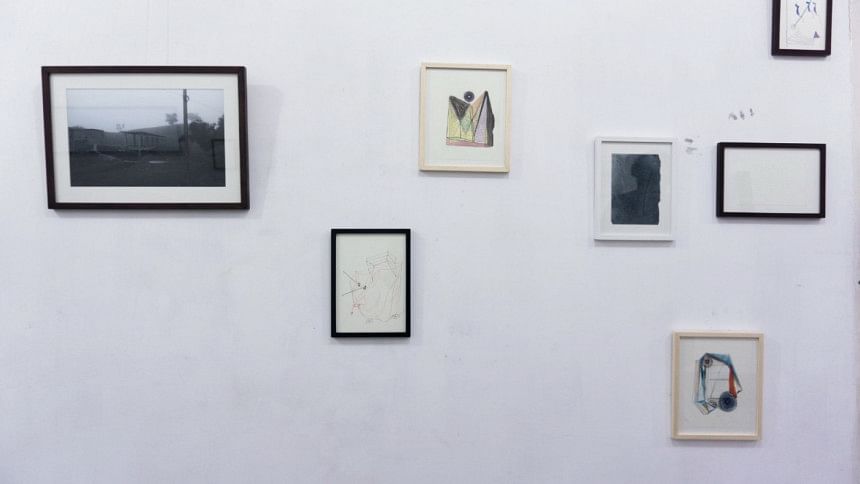The hallucinatory world of Nabil Rahman

Visual artist Nabil Rahman's solo exhibition, Water bodies, is currently taking place at Studio 6/6. Growing up, the artist spent most of his time in the Bronx, getting frisked by white cops, falling in love, facing heartbreaks and learning about life. The Bronx's walls are known as endless canvases. All mega cities around the world are designed in grids, and function based on statistics, as most of our life is represented through virtual reality today.
Nabil's use of graph papers for his drawings reflect the city spaces that he lived in. His house belonged to a block. All his known addresses belonged to a block, and he went by streets that were rather chaotic. Yet, the walls of those streets were covered with tagging, graffiti, gang members' secret codes and what not. From a safe distance, these overlapping works of the street artists and city dwellers come together as a mosaic of some sort.
The African American community rules the streets of the Bronx. Their flashy colours of clothing and lifestyles also honour the walls of the borough, the birthplace of hip hop. Nabil borrowed this aesthetics for his drawings, in a way bringing fragmented pieces of the painted walls with him in his home, in graph papers. His uses of red, black and yellow hues remind one of Brooklyn-born Jean-Michel Basquiat, who inspires the artist.
Nabil was born in Sylhet in a family of poets. His grandfather was the Ekushey Padak winner Kabi Dilwar, and his uncle Kishwar Ibne Dilwar, a poet of the 80s. He left Sylhet along with his family at the age of 11. His flashy colours, forms and patterns also remind one of the Gates of 'Uros', 'Mahfil', 'circus' and many others Bengali folklore traditions.
Water bodies is the result of his post-colonial hybridity, his physical habitation of two different spaces and his moral duality. With an aesthetical propaganda, he wants his viewers to be sunk into the depth of his hallucinatory colours, forms and patterns. In a way, the selected body of work for his exhibition is his attempt to disown and then stand-alone from the previous image that he has cultivated over the years as an artist in Dhaka.
Nabil somehow manufactures his viewers' secrets on paper, through a common spiritual code. His works are not the manifestation of any particular event. They are a representation of unknown events, right after the emotional period fades away and everything starts to make sense in patterns and forms.
Aside from the Bronx, it seems like Nabil is influenced by the aesthetics of Varanasi. His works in Water bodies exist as prayers, but not for a God asking for heaven and what not. Rather, they are a whimsical love letter with forms, colours and patterns, much like prayers from Sufi worshipers. His works represent visual hip hop, expressed through esoteric eastern philosophies. Bursting colours in a pattern, they are often loud and monstrous, and may transform into any shape at any given time. They float in the grid with harmony, but may break the pattern at any time – suggesting that Nabil is neither looking from the inside out, nor from the outside in.

 For all latest news, follow The Daily Star's Google News channel.
For all latest news, follow The Daily Star's Google News channel. 



Comments